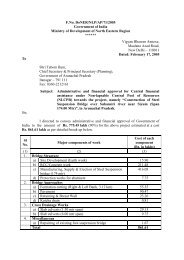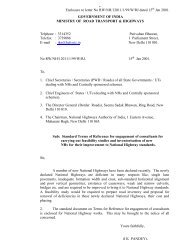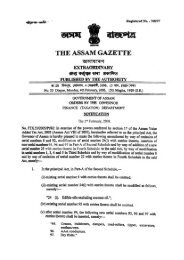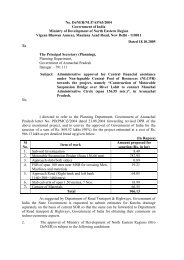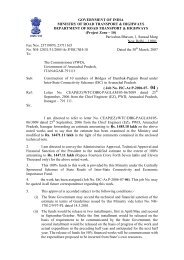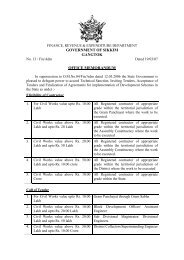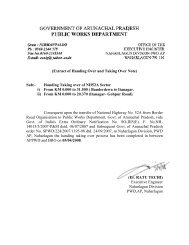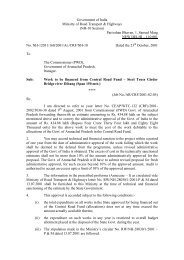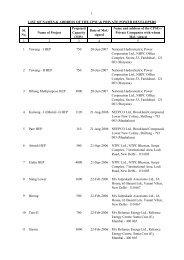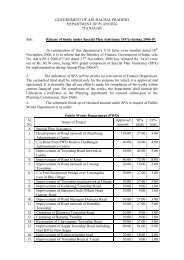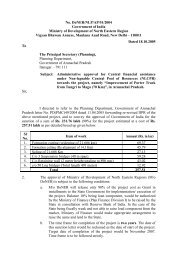Hand Book for Gaon Burahs and Panchayati Raj Leader
Hand Book for Gaon Burahs and Panchayati Raj Leader
Hand Book for Gaon Burahs and Panchayati Raj Leader
- No tags were found...
You also want an ePaper? Increase the reach of your titles
YUMPU automatically turns print PDFs into web optimized ePapers that Google loves.
56CAHPTER XIVEDUCATION, SARVA SHIKSHA ABHIYAN AND ROLE OF PRIs /GBsSarva Shiksha Abhiyan is a comprehensive <strong>and</strong> integrated flagshipprogramme of Govt. of India to attain Universal Elementary Education,covering the entire community of the Country on a mission mode. It is an ef<strong>for</strong>tto universalize elementary education by community ownership of the schoolsystem It is a response to the dem<strong>and</strong> <strong>for</strong> quality based education all over thecountry. The SSA Programme is also an attempt to provide an opportunity <strong>for</strong>improving human capabilities to all children through provision of communityowned quality education in a mission mode.In Arunachal Pradesh, SSA had been launched in 2000 – 01 inpartnership with the Govt. of India <strong>and</strong> through community participation atlocal level in the state. The Programme aims to provide useful <strong>and</strong> relevant,Elementary education to all the children in the 6 – 14 age group by 2010. Ithas also other goals to bridge social, regional <strong>and</strong> gender gaps with activeparticipation of the community.Aims <strong>and</strong> Objectives of SSASSA is a programme or abhiyan to provide universal elementaryeducation to all children without discriminating on the basis of Caste, Creed,Religion, Colour, Race, <strong>and</strong> Region. Following are the main objectives ofSSA:1. Universal access i.e. to provide school facility to all the habitations/villages within a walking distance of 01 KM. to 1.5 KM.2. All Children in school, through <strong>for</strong>mal schools, Education GuaranteeCentres, Alternate Schools, Back to School Camp, Bridge Courses,Residential Schools by 2003.3. All Children complete five years of primary schooling by 2007.4. All children complete eight years of elementary schooling by 2010.5. Bridge all gender <strong>and</strong> social category gaps at Primary stage by 2007 <strong>and</strong>at elementary education level by 2010.6. Universal retention by 2010 with quality education.To cover the deprived children or out of school children several ef<strong>for</strong>tshave been made, such as EGS Centres, New Primary School / Up gradationof Primary to Upper Primary have been opened as per Govt. norms. In theremote area where villages are thinly populated, Residential Schools havebeen opened to cover these out of school children. For 10 to 15 out of schoolchildren EGS Centres have been opened.Role <strong>and</strong> Responsibility of Community / VEC:Non – involvement of the community in education has been one of themajor problems in elementary education. There is very little interactionbetween the school <strong>and</strong> communities. The school premises in a village areviewed as a Sarkari space <strong>and</strong> the boundary wall works as a divide betweenthe community <strong>and</strong> the school. The school is seen as Govt. Institution over



